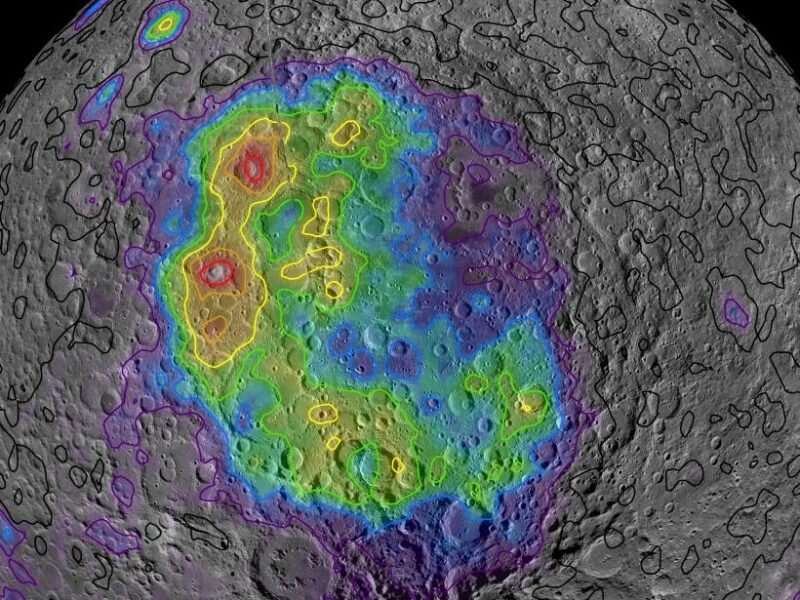Thorium concentrations measured by Lunar Prospector across the vast South Pole–Aitken Basin on the lunar far side are shown here, illustrating how mantle material ejected by an impact event about 4.3 billion years ago is currently distributed across the surface. Warmer colors represent higher concentrations; contour lines are at intervals of 0.5 part per million. Credit: Daniel P. Moriarty III
Despite our long history with Earth's closest celestial neighbor, much remains unknown about the moon, including about asymmetries between its near side and far side, for example, in crustal thickness and evidence of volcanic activity.
Now Moriarty et al. combine models, remote sensing data, and insights from lunar samples to refine the timeline of the moon's development, focusing on a feature called the South Pole–Aitken Basin (SPA). This basin—the oldest, deepest, and largest on the moon—was formed by a massive impact early in lunar history, roughly 4.3 billion years ago, and its shape and composition can give researchers an idea of what the moon was like at that moment in time.
Model simulations show that the impact that made the SPA was energetic enough to eject materials from the moon's early mantle. The simulated splash pattern corresponds to areas of the lunar surface known to be rich in thorium, and the researchers propose that this ejected material represents the "dregs" of an early molten mantle. As the moon's early magma ocean cooled, minerals and elements crystalized and either rose to become part of the crust or sank to become part of the lower mantle. Late in this process, thorium and other dense, incompatible elements were left in dregs sandwiched between the crust and mantle.
To explain the dramatic differences between the lunar near side and far side, earlier theories suggested that thorium-rich dregs occurred only on the near side. However, the new results demonstrate that these substances were ejected by an impact on the moon's far side. This observation implies that at the time of the impact, thorium-rich material must have been globally distributed and had not yet migrated to the near side or sunk toward the core, which is expected to occur at the end of the mantle crystallization process because of its high density.
Unlike the ejected materials, the rock melted by the SPA impact does not contain abundant thorium. Because an impact can melt materials from depths greater than those where ejected material originates, the thorium shortage in the melt indicates that the early mantle had distinct layers: a thorium-rich layer just under the crust and a different layer beneath that.
The scientists identified potential targets for future sampling missions focusing on ejected material, which could yield a clearer picture of the moon's early mantle. Further work should also focus on pinpointing the SPA's age, they say, because the vast, ancient basin is key to understanding the timeline of lunar history.
More information: D. P. Moriarty et al. Evidence for a Stratified Upper Mantle Preserved Within the South Pole‐Aitken Basin, Journal of Geophysical Research: Planets (2020). DOI: 10.1029/2020JE006589
Provided by American Geophysical Union
This story is republished courtesy of Eos, hosted by the American Geophysical Union. Read the original story here.
























